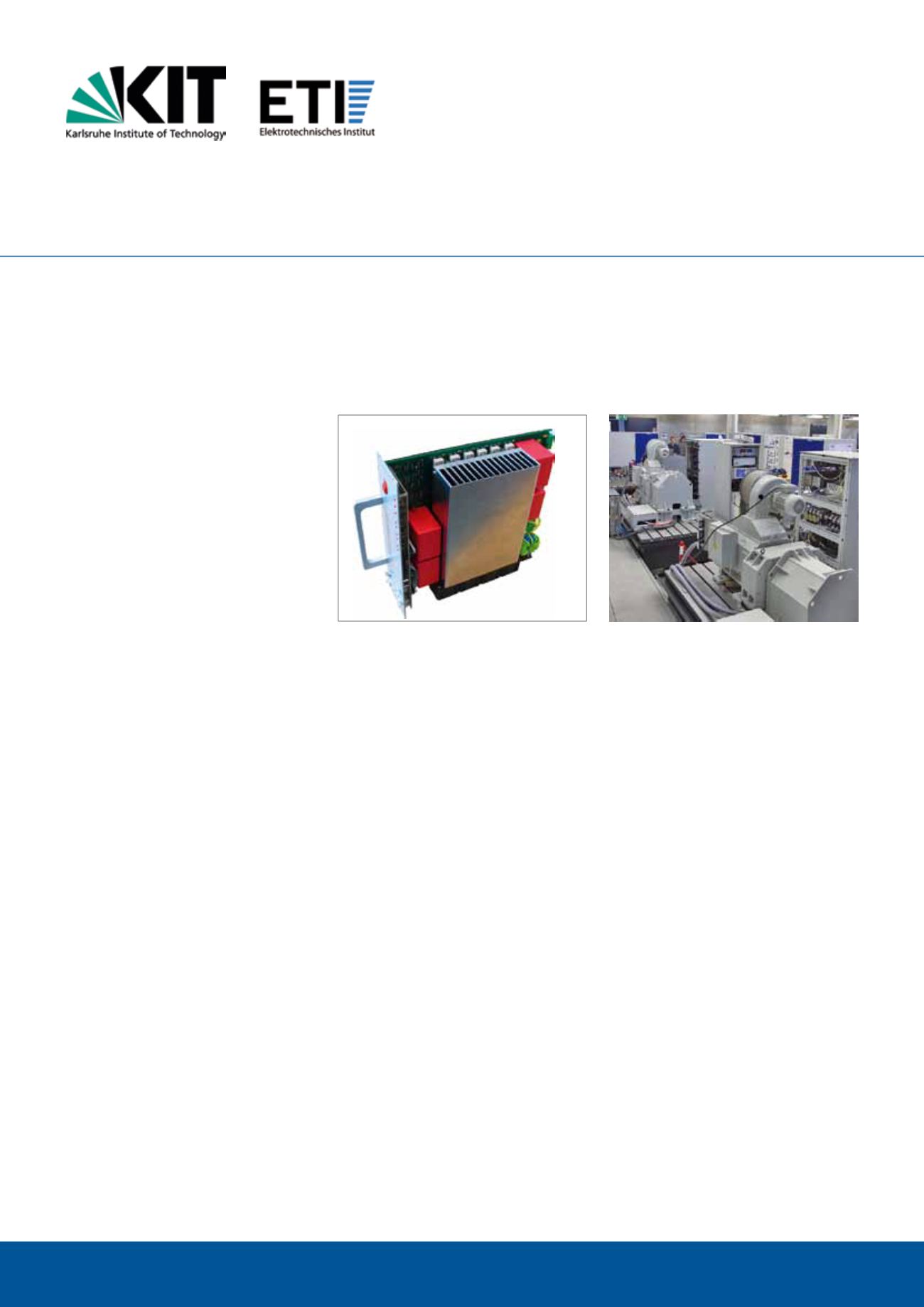
124
Karlsruhe Institute of Technology (KIT)
Elektrotechnisches Institut (ETI) –
Institute of Electrical Engineering
The Institute of Electrical Engineering
(ETI) was established and built in 1895
by Engelbert Arnold. It is currently led
by Prof. Dr.-Ing. Michael Braun, chair for
Electrical Drives and Power Electronics.
In 2011 and 2015 two additional chairs
have been established, one focusing on
hybrid and electric vehicles, headed by
Prof. Dr.-Ing. Martin Doppelbauer, and
one for power electronic systems, head-
ed by Prof. Dr.-Ing. Marc Hiller.
A colloquium with presentations and dis-
cussions about current research projects
and innovative product developments is
held regularly at the institute.
Electrical Drives and Power Electronics
Fields of activity and current research
projects:
•
Modular Multilevel Converters
•
Short time storage systems with
Double Layer Capacitors
•
E-Mobility and Smart Grids (joint re-
search projects IZEUS and grid-control)
•
Control of Permanent Magnet Synchro-
nous Motor with strongly nonlinear
magnetic characteristics
•
Modular and flexible Power Electronic
Systems for prototyping and test stands
Several converter systems with different
power levels up to 300kW have been de-
veloped at the ETI which can be used for
various applications, e.g. converters for
electrical machines, active-frond-ends, as
DC-DC-Converter or in combination with
electrical energy storage systems for their
integration in the power grid. Their flex-
ible configuration and adjustment of the
signal processing allows a defined usage
in test and prototype systems.
Hybrid Electric Vehicles
The requirements for motors and power
electronics as traction drives differ sig-
nificantly from conventional designs for
industrial applications. An optimized de-
sign of an electrical drive train can only
be achieved in an interdisciplinary con-
text. Therefore, the research fields are
split into three focus areas:
•
Mechanical Motor Design
•
Power Drive System (motor, power
electronics, mechanical drive train)
•
Electromagnetic Motor Design
Three test stands have been set up for the
characterization of prototypes and for para-
meterization and validation of simulations.
With powers up to 250 kW, speeds up to
18,000 /min (or 30,000 /min with gearbox)
and torques of up to 540 Nm they are an
ideal match to the power range of hybrid
and electric vehicles. Studies of the dynamics
of electric motors, analyzes of drive cycles,
development of control algorithms and
many more tasks can be performed.
Power Electronic Systems
Power Electronics are used in an increas-
ing number of different applications. The
optimized design of the power semicon-
ductors and passives is one of the keys to
comply with the requirements regarding
energy and cost efficiency. The research
topics focus on
•
simulation, design and setup of new
topologies
•
optimization of power electronic systems
•
investigation of new devices and
materials
Additional test stands for medium volt-
age power electronics and the charac-
terization of power semiconductors are
in preparation. This will enhance the ETI
test environment and enables new areas
of research.
Single PCB converter (DC-Link voltage: 900V, max.
output current: 130A, maximum power: 25kW)
Motor test benches for hybrid and full-electric drive
trains


